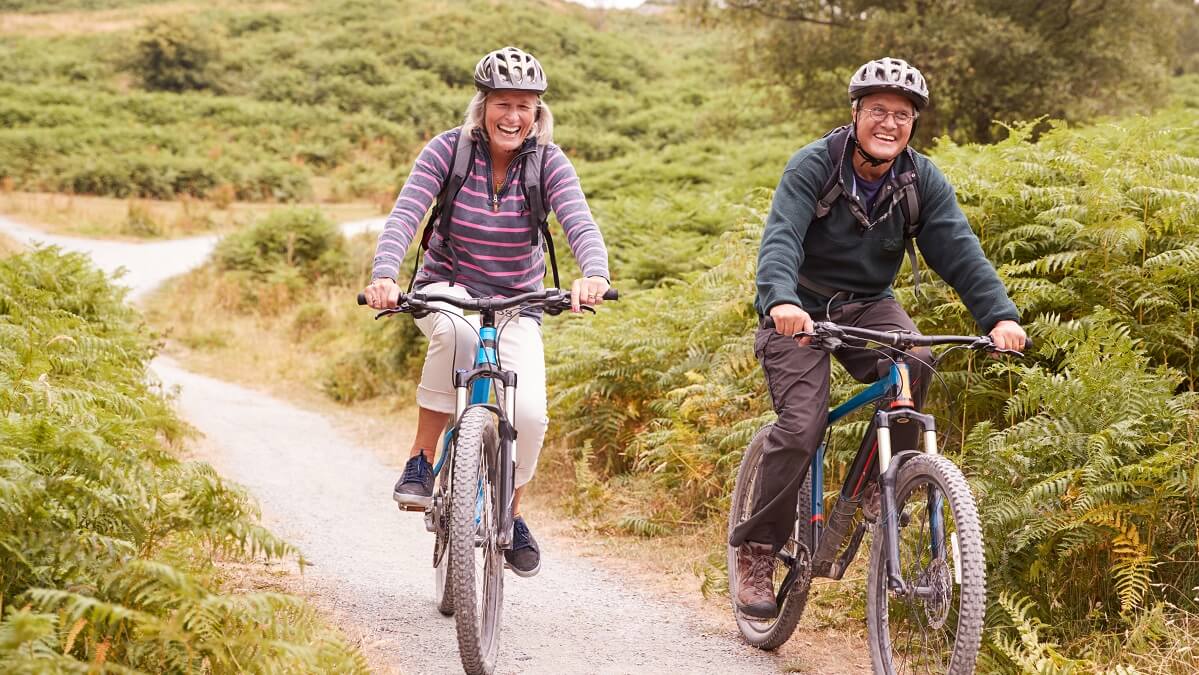Have you ever been guilty of giving a sneering look to a bunch of middle-aged Lycra-clad recreational cyclists taking up more than their share of space at the outdoor tables of your local café on a sunny weekend morning? I know I have. But as it turns out, these ‘midlife cyclists’ are probably going to have the last laugh, because their recreational cycling is likely extending their healthy lives.
Whatever their motives for jumping on their bikes, if they have been cycling regularly at a reasonable clip, they are likely to not only have better cardiovascular health than those of us who don’t, but also much better muscle conditioning, which can play an important role in keeping us ‘younger’.
Various studies have been done over the years confirming the benefits of cycling to the health of the heart but, until now, research into potential muscular benefits have focused only on elite cyclists performing at the highest levels of competition.
The man who decided to switch the research focus from heart to muscle mass is the somewhat ironically named Professor Alister Hart, the consultant orthopaedic hip surgeon at the Royal National Orthopaedic Hospital.
Prof. Hart led a cross-sectional study involving two groups, each comprising 28 male adults whose ages ranged from 30 to 65, with an average age of 49. The first group were engaged in regular recreational cycling, with each having cycled more than 7000km in the past year and had been training for 15 years on average.
The second group, labelled as physically inactive (PI), had not practiced sport for an average of 27 years.
Each of the 56 males underwent what is known as a Dixon MRI of the pelvis. The Dixon MRI method of imaging is useful for getting an accurate measurement of muscle mass and fat.
The gradual loss of muscle mass in later life, known in medicine as sarcopenia, can greatly reduce the quality of life as we age, so slowing it down can be hugely beneficial.
In Prof. Hart’s trial, the results – published in the journal BMC Musculoskeletal Disorders – were quite conclusive. The muscle mass of both the gluteus maximus and gluteus medius was greater in the recreational cyclists group than in the PI group. On top of that, the recreational cycling group also showed lower levels of intramuscular fat.
Given that sarcopenia and intramuscular fat have been associated with conditions such as type 2 diabetes, obesity and heart disease, as well as an increased likelihood of fractures and falls, the results spell good news for the long-term health of the regular cyclists.
Prof Hart, a former marathon runner, who is now a regular recreational cyclist himself, said the results of the study were very encouraging.
“We now have clear evidence that cycling is a great way to stay physically healthy for longer,” he said. “It helps to maintain muscles and prevent them from being weakened by fat infiltration, delaying some of the effects of ageing.”
Of course, there are other ways than cycling to keep your muscles in good shape and the study itself acknowledges that it is limited to looking at the main muscles involved when riding a bike.
Nevertheless, the benefits of going for regular rides to both your cardiovascular and muscular health are undeniable.
With that in mind, the next time I have to make my way around a conglomerate of recreational cyclists outside my local café, I’ll try to be less sneering and more admiring.
Are you a ‘midlife cyclist’? Would you be willing to take up regular bike riding to help maintain your muscle mass? Why not share your thoughts in the comments section below?
Also read: Glute force: Why big, strong bum muscles matter


My husband cycles 12 klm’s every day. He is 73. I only cycle once a week. I am 71. We both walk every day but we also have to put up with 30 degree temps every day.
Hi Believer. The abbreviation for kilometres is simply km. So, “….cycles 12km every day”.
Cheers.
I’m 72, with osteoporosis, and though Cycling isn’t the preferred exercise for that, it does get me out in the sunshine and fresh air. I have a 3 wheeler, as I don’t think I could ride an ordinary bike these days! I never ride on the road, just on the footpaths around my neighborhood, as the nearest cycle park is a bit too far away for me.
I don’t cycle but I run 6 days a week for a total of around 40km.
So far my joints are really good but if that changes I might have to start cycling.
I am 70.